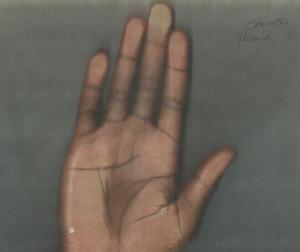Looking for design inspiration? Browse our curated collections!
August 1st, 2014 - 07:23 PM

Fine art is art developed primarily for aesthetics, distinguishing it from applied art that also has to serve some practical function.
Historically, the five main fine arts were painting, sculpture, architecture, music and poetry, with performing arts including theater and dance.[1] Today, the fine arts commonly include additional forms, such as film, photography, conceptual art, and printmaking. However, in some institutes of learning or in museums, fine art and frequently the term fine arts (pl.) as well, are associated exclusively with visual art forms.[citation needed]
One definition of fine art is "a visual art considered to have been created primarily for aesthetic and intellectual purposes and judged for its beauty and meaningfulness, specifically, painting, sculpture, drawing, watercolor, graphics, and architecture."[2] In that sense, there are conceptual differences between the Fine Arts and the Applied Arts. As originally conceived, and as understood for much of the modern era, the perception of aesthetic qualities required a refined judgment usually referred to as having good taste, which differentiated fine art from popular art and entertainment.[3] However in the Postmodern era, the value of good taste is disappearing, to the point that having bad taste has become synonymous with being avant-garde.[4] The term "fine art" is now rarely found in art history, but remains common in the art trade and as a title for university departments and degrees, even if rarely used in teaching.
The word "fine" does not so much denote the quality of the artwork in question, but the purity of the discipline according to traditional canons.[citation needed] This definition originally excluded the applied or decorative arts, and the products of what were regarded as crafts. In contemporary practice these distinctions and restrictions have become essentially meaningless, as the concept or intention of the artist is given primacy, regardless of the means through which this is expressed.
According to some writers the concept of a distinct category of fine art is an invention of the early modern period in the West. Larry Shiner in his The Invention of Art: A Cultural History (2003) locates the invention in the 18th century: "There was a traditional “system of the arts” in the West before the eighteenth century. (Other traditional cultures still have a similar system.) In that system, an artist or artisan was a skilled maker or practitioner, a work of art was the useful product of skilled work, and the appreciation of the arts was integrally connected with their role in the rest of life. “Art,” in other words, meant approximately the same thing as the Greek word techne, or in English “skill”, a sense that has survived in phrases like “the art of war,” “the art of love,” and “the art of medicine.”[5] Similar ideas have been expressed by Paul Oskar Kristeller, Pierre Bourdieu, and Terry Eagleton (e.g. The Ideology of the Aesthetic), though the point of invention is often placed earlier, in the Italian Renaissance
ultural perspectives[edit]
The separation of arts and crafts that often exists in Europe and the US is not shared by all other cultures. In Japanese aesthetics the activities of everyday life are depicted by integrating not only art with craft but man-made with nature. Traditional Chinese art distinguished within Chinese painting between the mostly landscape literati painting of scholar gentlemen and the artisans of the schools of court painting and sculpture. A high status was also given to many things that would be seen as craft objects in the West, in particular ceramics, jade carving, weaving, and embroidery. Latin American art was dominated by European colonialism until the 20th-century, when indigenous art began to reassert itself inspired by the Constructivist Movement, which reunited arts with crafts based upon socialist principles.
Comments
There are no comments on this blog. Click here to post the first comment.